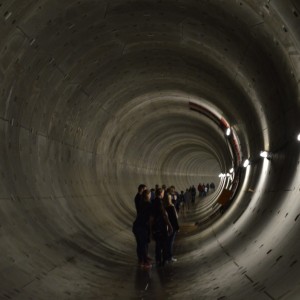
How Many SDRs Can Dance on the Head of a Round of Funding?
There’s something funny that happens when the venture money starts flowing, and something funnier that happens when it becomes a torrent: hiring lots of people becomes synonymous with business success. It even gets a special name: scaling. Not like “scaling a mountain” or even “scaling a fish,” but just “getting a whole lot bigger to show that you can.”
I’m not saying this is insane, although it is certainly peculiar to the venture-funded world. Not many CEOs across the globe wake up each morning asking themselves, “I wonder how many people we can hire today?” And what kind of people do funded B2B startups need above all others? You only need to look at the shape of the sales funnel to get the answer: top-of-the-funnel sales development reps — SDRs!
It’s Not a Laughing Matter!
With the recent pullback of venture madness, this question has morphed a bit. I could feel this change of sentiment coming on a few months ago when an executive sponsor at a customer’s office said to me, “Chris, here’s what it’s come to: we are fighting to hire 23-year-olds to set appointments for 24-year-olds.” And, funny though that line was to me, he wasn’t laughing.
Now the “Can we scale our SDR team to infinity?” question is morphing into “How many SDRs do we actually need to make this company go?” That’s a normal business question, and with a little math and a tiny bit of systems theory, it’s pretty easy to answer.
And the answer is, “As many SDRs as it takes to have as many conversations as you need to set appointments at a rate that keeps enough AEs sufficiently busy with meetings to hit the company’s number.” Note the driver of the rate of appointments is not the SDR: it’s the conversations.
Faster Than a Speeding Bullet
Try this thought experiment: imagine that you show up one morning and your whole six-person SDR team has been replaced with Marvel character Pietro Maximoff, who turns out to have sales chops in addition to moving so fast as to be effectively in two places at once.
So, first you shorten his name to Pete, because that’s faster to say, and then you sit back and watch. Pete doesn’t just dial the phone: Pete dials 5 or 6 or 7 phones at a time. Pete’s fingers are beyond a blur as he navigates each phone call, jumping from one phone to another in a split second to execute those simple but necessary steps of pressing 1 for this and 2 for that, spelling and speaking the prospect’s name for dial-by-name directories, slowing down briefly to politely ask gatekeepers for transfers, noting bad numbers and fax numbers and numbers that ring forever, and hanging up on voicemail greetings. Oh, and yes, actually talking to prospects on the off chance one of those precious targets picks up. Pete even updates your CRM instantly, and accurately, and maybe even cheerfully — something you have never seen your SDRs do.
At the end of this fantastic day, Pete Maximoff has had 50 sales conversations and set three appointments for your AEs. Then you wake up from your Marvel-fantasy thought experiment and think, “Great! But Pietro Maximoff is fiction, and I live in the real world.” But you get that it’s not the SDRs you need: it’s the conversations, even if somehow they were all had by one very fast SDR. But so what? It’s a thought experiment, not reality.
The Value of Velocity
Well, it turns out that right here in the real world there is real technology that lets your best SDRs have 50 sales conversations in a day, comfortably. Given that you’d be using your best SDRs, these are really good conversations; so not only does your SDR “team” output go up, but the percentage of conversations that turn into quality appointments goes up as well.
The technology is called ConnectAndSell Lightning™. It’s our agent-assisted dialing platform that connects to your prospects by doing all the dialing and navigating for you, instantly and silently handing off the call to your SDR when a decision maker answers the phone in a business-like way. It takes about 30 minutes to integrate Lightning™ with your CRM and about 10 minutes for your top SDRs to learn how to use it.
It turns out that the right number of SDRs on your team is the number it takes, going comfortably at Maximoff velocity, to generate the conversations needed to meet the needs of business. I’ll leave the last words on the subject to Talia Brott, Sales Manager at eSignLive, a VASCO company, speaking to Tom Chamberlain, Research Director at CSO Insights:
“I would need 18 sales reps to do the work of 3 using ConnectAndSell.”
Time to jet! Catch you next post.
